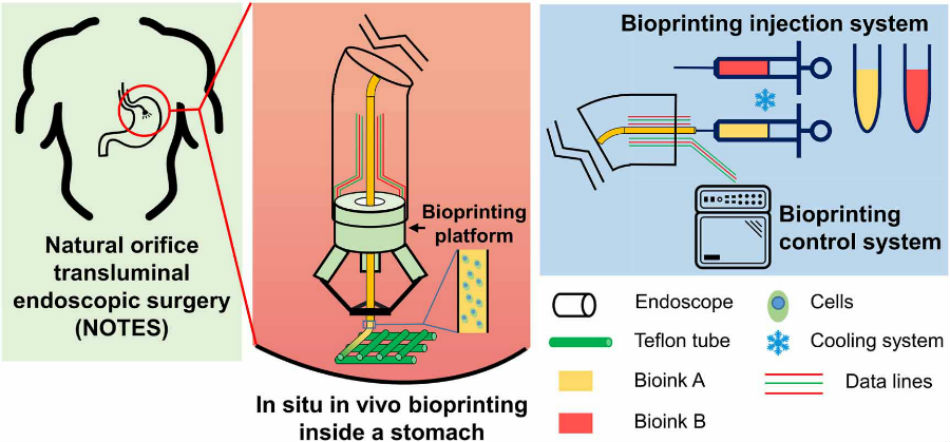
Credit: Tsinghua University
Scientists from China have created a microbot that can bioprint cells and repair gastric ulcers from inside the body. This novel method of tissue repairing is called the ‘in situ in vivo bioprinting’. Their success is believed to be a big step forward in the novel field of bioprinting.
Gastric ulcers are commonly referred to as stomach wounds that are usually opened on the stomach wall. These can be very painful and hard to treat. Untreated gastric ulcers may result in internal bleeding and can be life-threatening. “Gastric wall injury is a common problem in the digestive tract, and about 12 per cent of the world’s population suffer from it to varying degrees,” says Professor Tao Xu, co-author of the study.
What exactly happens here?
The bioprinting method prints and deliver cells directly to the wounded area and will repair the tissue. This method will be very useful and could replace unnecessary invasive procedures.
According to the researchers, “The difficulty is that current bioprinting technology focuses on external sites. Bioprinters are normally quite large, and cannot be applied to inner tissue repair without invasive surgery to give enough room for the printing operation. To overcome this, we developed a microrobot that enters the body via an endoscope to carry out tissue repair inside the body.”
About the bioprinting platform
It has a fixed base and a moving platform with ‘3 identical kinetic chains’. The whole unit is called a delta robot. When entering into the patient’s body, it stays folded until the bioprinting begins inside, at the wound site.

According to Wenxiang Zhao, an associate of the study, “We tested the system in two ways. First, with a biological model of a human stomach and an endoscope, to mimic the insertion and printing operation elements of the process. Second, we carried out a bioprinting test in a cell culture dish to test how effective the device was at bioprinting viable cells and repairing wounds,”

Credit: Zhao et al. 2020
Both experiments had successful outputs. Their printed cell culture showed viable and a steady proliferation over a 10-day period. This indicates that the bioprinted cells in the tissue scaffolds functions properly.
The research team is currently refining the bioprinting platform and the bio-inks and hope this would be ready in the near future.
The study has been published in the journal, Biofabrication.

